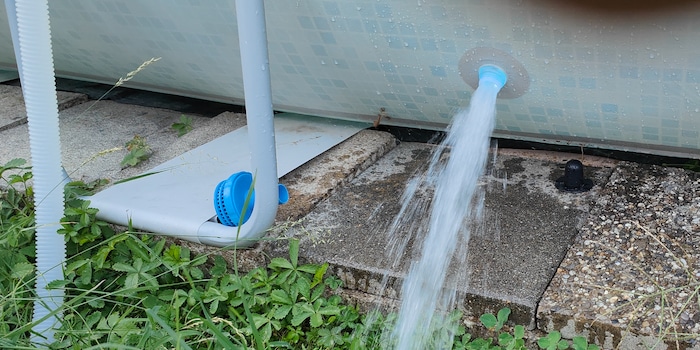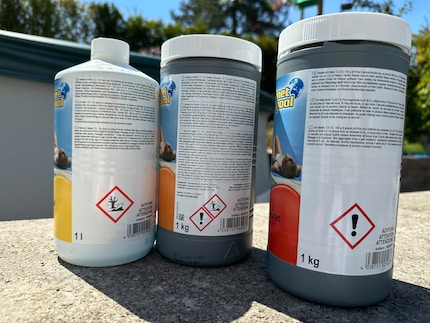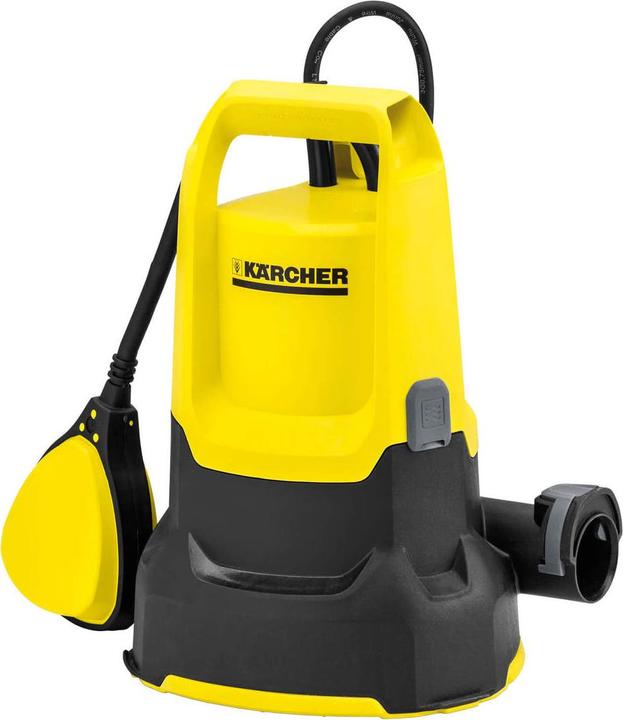

The pool season’s over – what to do with the water?
When summer ends, many pools in private gardens are packed away. Where to put the water? Here are the rules you’ll need to follow.
Just a moment ago, the kids were splashing around in the water – now, the pool’s covered with leaves in autumn colours. The swimming season always ends too soon and too abruptly – at least for us. I hold the honorary title of pool boy in the family, which means I’m in charge of taking down the swimming pool in the autumn.
We have an Intex above ground pool, and I start off by dismantling the sand filter system. I’ve covered the water inlet and outlet with caps. All that’s left to do now is to get rid of about 4,000 litres of water. But where do I put it? There are two possibilities.
1. Into the sewer
Chemically treated pool water is waste water and must be disposed of properly. It needs to go into the same sewers as, for example, water from dishwashers, showers or toilets. A good place to dispose of it is usually the sink in the cellar. However, getting it there through the garden hose is probably a tricky task.
Pool water usually contains large amounts of chlorine and anti-algae agents and can’t just be poured down a street drain. Instead, wastewater in most villages and towns in Switzerland is disposed of in a so-called separative sewer where rainwater and other surface water is treated differently from wastewater. The latter goes through an elaborate and correspondingly expensive process in sewage treatment plants (STP) before it flows back into the public water system. Rainwater, on the other hand, is often just channelled, possibly stored temporarily, and then discharged into streams or rivers.
Strict limit values and further rules have been defined for discharging water from private swimming pools in the federal Waters Protection Ordinance:
- The pH value of the discharged wastewater must be between 6.5 and 9.0.
- No more than 2 litres per second may be discharged.
- Water from swimming pools may be discharged only when the disinfectant has become inactive; this is usually the case after one week without treatment.
The canton of Solothurn has published a helpful quick guide (only available in German).
2. Into your garden
If discharging your pool water into a public sewer is too complicated, there’s always the option of using it in your own garden, e.g. to water flowers or the lawn. However, the water must be within the pH values stated above, or your plants will die. And, of course, it must be chlorine-free. To be sure it is, leave the pool water untreated for two weeks.
During this time, algae may develop. However, this is also a sign that the water is largely harmless to nature.
When draining, make sure to control where the water goes. It’s easy to underestimate how much water an above ground pool can hold. And I’m sure you don’t want 10,000 litres of water suddenly washing away your neighbour’s compost heap. If you connect a garden hose to the outlet valve, you can direct where the water goes.
Always be careful with treated pool water
Even if you follow the rules above, the water from your pool is never risk-free. Depending on the chemicals you use, they may still be in the water after two weeks or more.
The dangerous substances used in pool care and cleaning products as well as those for water treatment are declared on the packaging. Anything that irritates the eyes or skin, or is labelled as corrosive, flammable or toxic, shouldn’t be released into the environment. Biocides, such as those found in anti-algae products, are particularly harmful. Some of the chemical compounds they contain are so stable they even survive frost.

Source: Martin Jungfer
Detecting whether and to what extent pool water is still chemically contaminated is virtually impossible with commercially available test strips. The least you can do is make sure the water is free of chlorine. This is the case at a value of 0.05 mg/l. For comparison, when the pool is in use, the chlorine value in the water should be at least 0.2 mg/l.
Down to the last litre
Ever experienced the following when emptying the pool? Although the outlet of an above-ground pool is quite low, a few centimetres of water still remain after draining it. In this case, I recommend using a suction pump to get rid of the last bit of water. It can also speed up the entire emptying process.
Header image: Patrick VogtJournalist since 1997. Stopovers in Franconia (or the Franken region), Lake Constance, Obwalden, Nidwalden and Zurich. Father since 2014. Expert in editorial organisation and motivation. Focus on sustainability, home office tools, beautiful things for the home, creative toys and sports equipment.
Practical solutions for everyday problems with technology, household hacks and much more.
Show all


